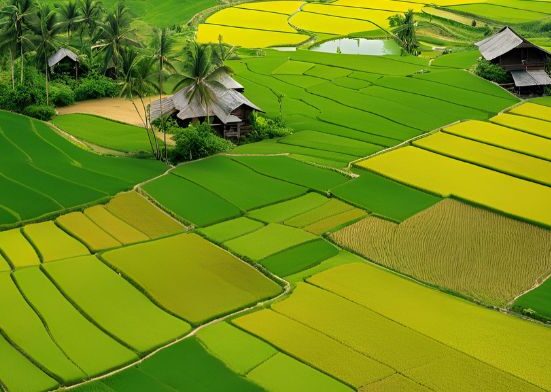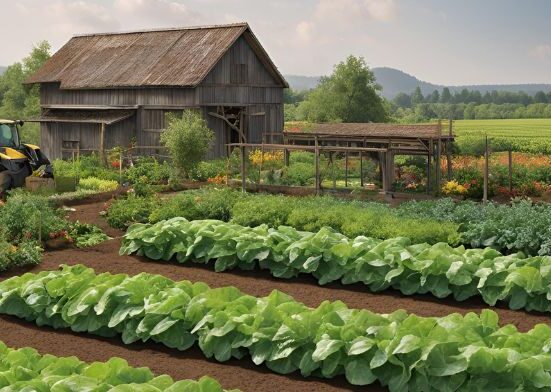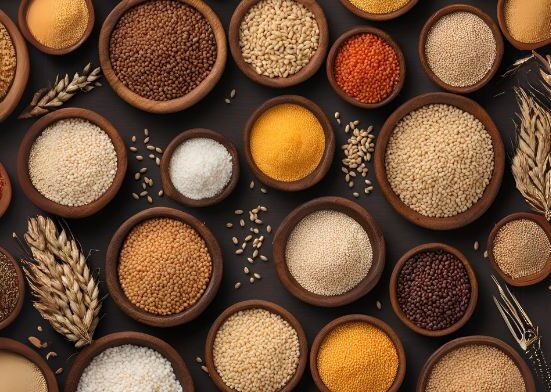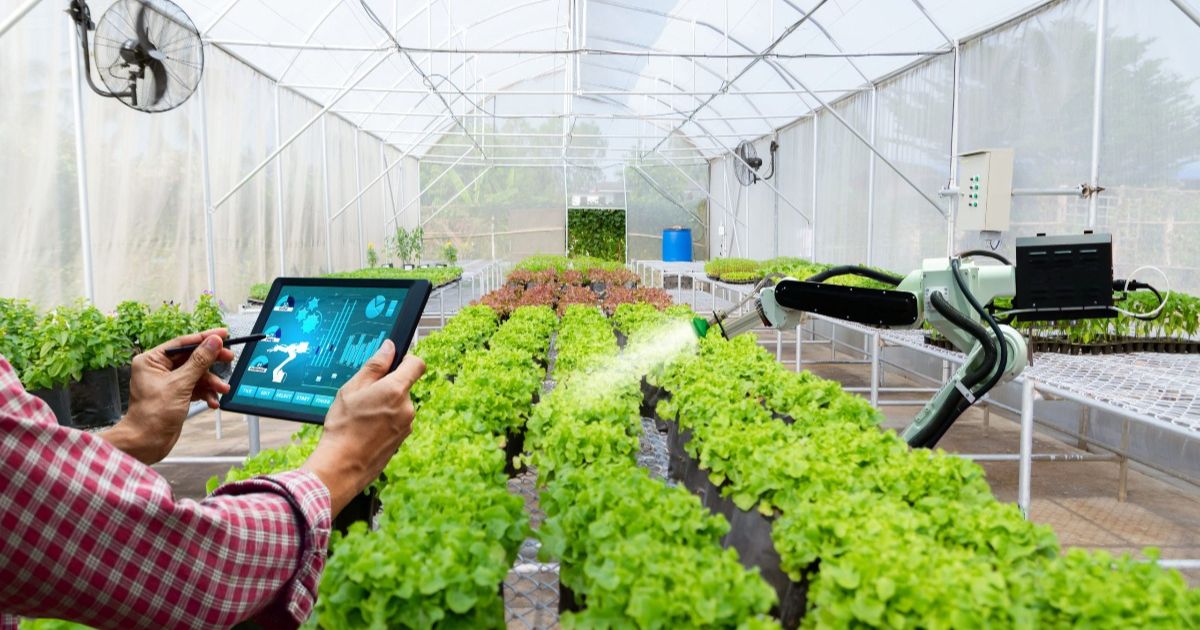Modern commercial agriculture plays a pivotal role in feeding the global economy, bridging the gap between growing food demands and efficient production systems. This sector involves large-scale farming operations that use advanced technologies, machinery, and scientific research to boost productivity, improve crop yields, and ensure sustainability. The increasing global population and urbanization have led to heightened pressure on agricultural systems to provide sufficient food supplies. In response, modern commercial agriculture has adopted methods such as precision farming, genetic modifications, and agrochemical inputs to meet these challenges. While driving economic growth, especially in rural economies, it also faces concerns related to environmental impacts, resource depletion, and labor practices. As global food systems evolve, the future of it will hinge on balancing innovation with sustainability, ensuring food security for all while mitigating ecological harm. This introduction overviews the complex relationship between modern commercial agriculture and the global economy.
The Evolution of Commercial Agriculture
Commercial agriculture, characterized by large-scale production for profit, has roots in the Agricultural Revolution of the 18th century. Mechanization, such as the invention of the seed drill and steam-powered machinery, transformed subsistence farming into a market-driven enterprise. The 20th century’s Green Revolution further accelerated this shift, introducing high-yield crop varieties, synthetic fertilizers, and pesticides that boosted productivity. Today, it is a sophisticated industry, integrating cutting-edge technologies like precision farming, genetic engineering, and data analytics to maximize efficiency and output.
The scale of modern agriculture is staggering. According to the Food and Agriculture Organization (FAO), global agricultural production has tripled since the 1960s, with major crops like wheat, rice, and maize feeding billions. In 2023, the international agricultural market was valued at over $4 trillion, reflecting its critical role in trade, employment, and economic stability. Countries like the United States, Brazil, and China dominate production, exporting vast quantities of grains, soybeans, and meat to meet global Sustainable irrigation demand.
Key Features of Modern Commercial Agriculture
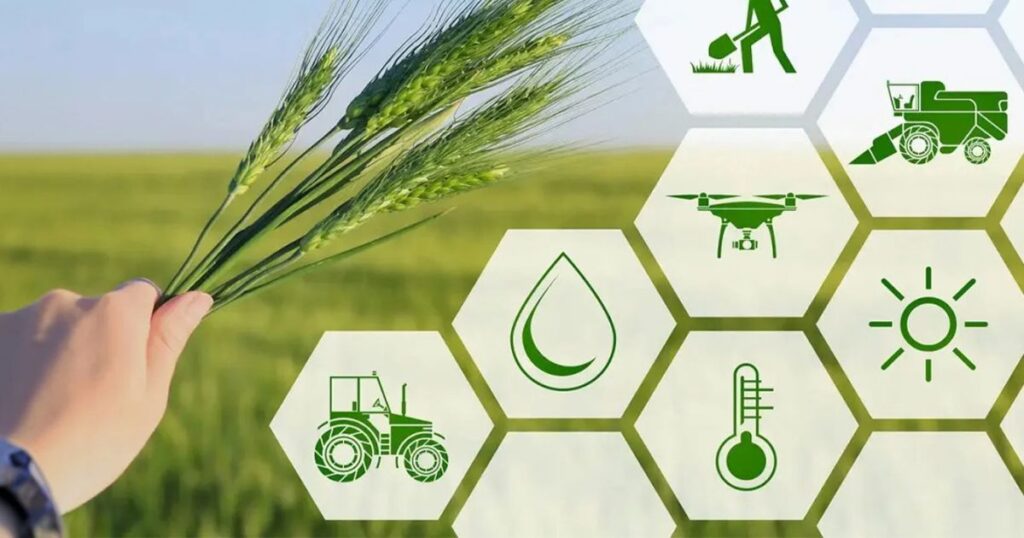
Modern commercial agriculture is characterized by large-scale production systems that emphasize efficiency, technology, and profitability. Key features include advanced machinery and automation, allowing for higher productivity and reduced labor dependency. Genetically modified organisms (GMOs) and high-yield crop varieties are commonly employed to increase output and resistance to pests and diseases. Chemical inputs such as synthetic fertilizers, pesticides, and herbicides are widely used to enhance crop performance. Precision agriculture—utilizing GPS, drones, and data analytics—enables farmers to monitor and manage fields with high accuracy.
Commercial farming is often monocultural, focusing on a single crop or livestock type to streamline operations. It is market-oriented, aiming to meet global food demand and supply chains. This type of agriculture also involves significant capital investment and is typically supported by agribusinesses and government subsidies. While it boosts food production, it raises concerns about sustainability, biodiversity, and environmental impact.
Technological Integration
Technology is the backbone of modern agriculture. Precision agriculture, enabled by GPS, drones, and satellite imagery, allows farmers to monitor crops and soil conditions in real-time, optimizing water, fertilizer, and pesticide use. For example, variable-rate irrigation systems adjust water application based on soil moisture data, reducing waste and improving yields. In 2024, the global precision agriculture market was estimated at $9 billion, with adoption growing rapidly in both developed and emerging agricultural commercial economies.
Biotechnology, particularly genetically modified organisms (GMOs), has revolutionized crop production. GMO crops like Bt corn and Roundup Ready soybeans resist pests and herbicides, increasing yields by up to 20% in some regions, according to the National Academy of Sciences. Gene-editing tools like CRISPR are now enabling the development of drought-tolerant and nutrient-enriched crops, addressing both environmental and nutritional challenges. Automation is another game-changer. Autonomous tractors, robotic harvesters, and AI-driven sorting systems reduce labor costs and improve efficiency. In Japan, where labor shortages are acute, robotic systems harvest delicate fruits like strawberries with precision, while in the Netherlands, automated greenhouses produce vegetables year-round with minimal human intervention.
Global Supply Chains
Commercial agriculture is deeply integrated into global supply chains. Crops grown in one region are processed, packaged, and shipped worldwide, facilitated by advanced logistics and trade agreements. For instance, Brazil exports over 100 million tons of soybeans annually, primarily to China, where they feed livestock and produce cooking oil. Similarly, the United States supplies nearly 40% of the world’s corn, fueling both food and biofuel industries.
Refrigeration, containerization, and real-time tracking have extended the shelf life and reach of perishable goods. Avocados from Mexico, kiwis from New Zealand, and salmon from Norway are now staples in supermarkets worldwide. However, this globalized system is vulnerable to disruptions, as seen during the COVID-19 pandemic, when port closures and labor shortages caused delays and spikes in commercial agriculture examples spikes.
Corporate Consolidation
The agricultural sector has seen significant consolidation, with large agribusinesses dominating the market. Companies like Cargill, Archer Daniels Midland (ADM), and Monsanto (now part of Bayer) control vast segments of the supply chain, from seeds and fertilizers to processing and distribution. In 2023, the top four seed companies accounted for over 60% of the global seed market, raising concerns about farmer dependency and biodiversity loss.
This consolidation drives efficiency and economies of scale but also sparks debate. Critics argue that corporate control limits farmers’ choices, increases input costs, and prioritizes profit over sustainability. In contrast, supporters highlight how these companies fund research and development, delivering innovations that boost productivity.
Sustainability and Regenerative Practices
As environmental concerns mount, commercial agriculture is under pressure to adopt sustainable practices. Conventional farming methods, reliant on chemical inputs and monoculture, have degraded soils, polluted waterways, and contributed to greenhouse gas emissions. The FAO estimates that agriculture accounts for 14% of global emissions, primarily from methane (livestock) and nitrous types of commercial agriculture oxide (fertilizers).
Regenerative agriculture, which emphasizes soil health, carbon sequestration, and biodiversity, is gaining traction. Practices like cover cropping, no-till farming, and rotational grazing restore ecosystems while maintaining productivity. In the U.S., companies like General Mills and PepsiCo are investing in regenerative programs, aiming to source 100% of their ingredients from sustainable farms by 2030. Vertical farming and controlled-environment agriculture (CEA) are also emerging as sustainable alternatives. These systems grow crops indoors using hydroponics or aeroponics, consuming up to 90% less water than traditional farming. In Singapore, vertical farms produce leafy greens for urban consumers, reducing reliance on imports.
Economic Impacts of Commercial Agriculture
Commercial agriculture plays a significant role in shaping the economic landscape of both developed and developing nations. By focusing on large-scale production for profit, it boosts national income through exports and contributes to GDP growth. The sector creates employment opportunities across farming, processing, transportation, and distribution, supporting rural and urban economies alike. It also attracts investment in infrastructure, such as irrigation systems, storage facilities, and roads, enhancing economic development in agricultural regions. Additionally, it fosters technological innovation, increasing productivity and efficiency. However, it can also lead to economic disparities, as large agribusinesses often dominate markets, sidelining small-scale farmers. Price volatility in global markets can further impact income stability for producers. Despite these challenges, commercial agriculture remains a key driver of economic growth, food security, and global trade, making it a vital component of economic planning and development in many countries.
Feeding a Growing Population
With the global population projected to reach 9.7 billion by 2050, commercial agriculture is tasked with producing 50% more food than it does today, according to the FAO. High-yield farming systems have already averted widespread famine, particularly in Asia, where rice production doubled during the Green Revolution. Today, innovations like lab-grown meat and plant-based proteins are diversifying food sources, addressing both ethical and environmental commercial farming examples Weed management strategies concern.
Driving Trade and Employment
Agriculture is a major driver of international trade. In 2023, agricultural exports accounted for 10% of global merchandise trade, with developing countries increasingly contributing to the market. For example, Vietnam has become a leading exporter of coffee and rice, lifting millions out of what are commercial farmers poverty.
The sector also employs over 1 billion people worldwide, particularly in labor-intensive regions like Sub-Saharan Africa. However, mechanization and automation are reducing labor needs in developed countries, raising questions about rural livelihoods and urban Saltwater Farming: The Future Of Coastal Agriculture migration.
Fueling Related Industries
Agriculture supports a web of industries, from equipment manufacturing to food processing and retail. John Deere, a leading producer of agricultural machinery, reported $50 billion in revenue in 2023, reflecting the sector’s demand for advanced tools. Similarly, the global food and beverage industry, reliant on agricultural inputs, is valued at over $8 trillion. Biofuels, derived from crops like corn and sugarcane, are another growing market. In Brazil, ethanol from sugarcane powers millions of vehicles, reducing reliance on fossil fuels. However, the diversion of crops to biofuels has sparked debates over food security, particularly in low-income countries with commercial agriculture.
Challenges Facing Commercial Agriculture
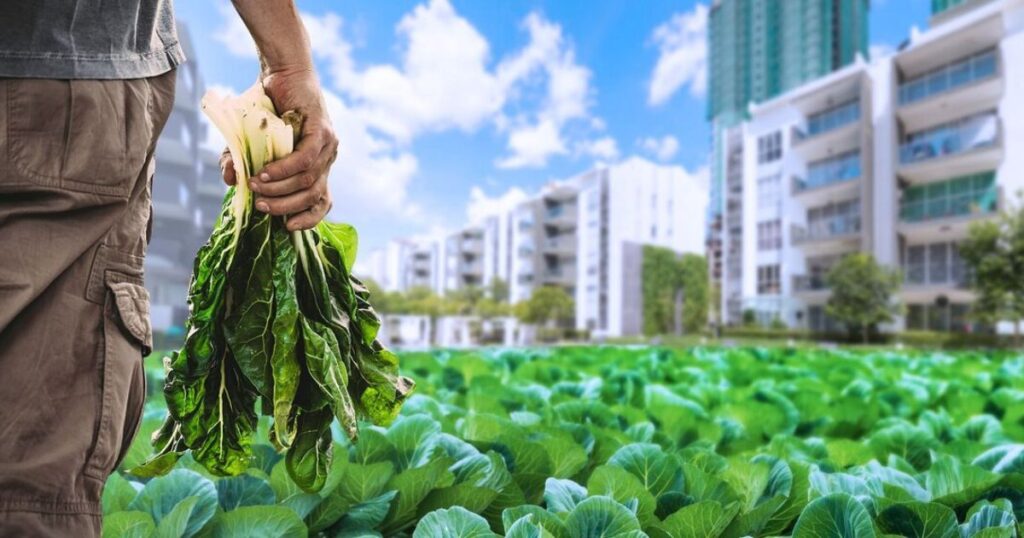 Commercial agriculture faces a range of challenges that impact its productivity, sustainability, and profitability. One major issue is climate change, which leads to unpredictable weather patterns, droughts, and floods that threaten crop yields and livestock health. Soil degradation and loss of biodiversity also reduce long-term agricultural viability. Moreover, the sector is under pressure to meet rising global food demand while minimizing environmental harm. Labor shortages, especially in developed countries, complicate operations and increase production costs. Market fluctuations, trade restrictions, and price volatility create economic uncertainty for farmers.
Commercial agriculture faces a range of challenges that impact its productivity, sustainability, and profitability. One major issue is climate change, which leads to unpredictable weather patterns, droughts, and floods that threaten crop yields and livestock health. Soil degradation and loss of biodiversity also reduce long-term agricultural viability. Moreover, the sector is under pressure to meet rising global food demand while minimizing environmental harm. Labor shortages, especially in developed countries, complicate operations and increase production costs. Market fluctuations, trade restrictions, and price volatility create economic uncertainty for farmers.
Access to capital and modern technology remains limited in many regions, hindering efficiency and innovation. Additionally, excessive reliance on chemical inputs can harm ecosystems and human health. These challenges require integrated solutions, including sustainable practices, policy support, and technological innovation, to ensure the future of commercial agriculture.
Climate Change
Climate change poses an existential threat to agriculture. Rising temperatures, erratic rainfall, and extreme weather events disrupt planting and harvesting cycles. The Intergovernmental Panel on Climate Change (IPCC) predicts that global crop yields could decline by 10-25% by 2050 without adaptation. Drought-tolerant crops and climate-smart practices are critical, but their adoption is uneven, particularly in developing regions.
Resource Scarcity
Agriculture consumes 70% of the world’s freshwater, and overuse is depleting aquifers and rivers. The FAO warns that water scarcity could reduce global agricultural output by 20% by 2050. Soil degradation is another concern, with 33% of global soils classified as degraded due to erosion and chemical overuse.
Food Waste and Inequality
Despite abundant production, 800 million people remain undernourished, largely due to unequal distribution and food waste. Globally, one-third of food produced—1.3 billion tons annually—is wasted, according to the FAO. Inefficiencies in supply chains, consumer behavior, and lack of infrastructure in developing countries exacerbate the problem.
Ethical and Social Concerns
Industrial farming practices, such as confined animal feeding operations (CAFOs), raise ethical questions about animal welfare and environmental impact. Labor conditions in agriculture, particularly for migrant workers, also face scrutiny. In 2023, reports of exploitative practices in the U.S. and Europe prompted calls for stronger regulations.
The Future of Commercial Agriculture
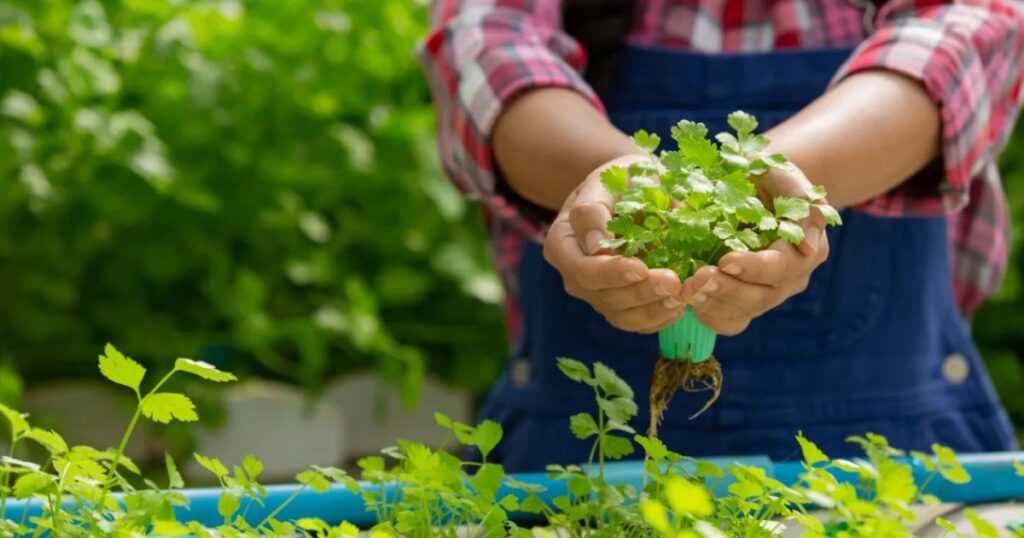 The future of commercial agriculture is rapidly evolving, driven by advances in technology, sustainability, and global demand. Precision agriculture, powered by AI, drones, and satellite data, is transforming how crops are planted, monitored, and harvested, leading to increased efficiency and reduced environmental impact. Vertical farming and hydroponics are becoming viable solutions to urban food production, conserving water and land. Additionally, biotechnology is enhancing crop resilience and yields through genetic engineering and improved breeding techniques. Climate change remains a critical challenge, prompting innovations in adaptive farming practices and carbon-smart agriculture. Global markets and consumer preferences are also shifting, with a growing emphasis on organic, traceable, and ethically produced goods. As the agricultural sector embraces digital tools and sustainable practices, it is poised to feed a growing population while addressing environmental concerns and economic pressures. The future it lies in balancing productivity, innovation, and ecological responsibility.
The future of commercial agriculture is rapidly evolving, driven by advances in technology, sustainability, and global demand. Precision agriculture, powered by AI, drones, and satellite data, is transforming how crops are planted, monitored, and harvested, leading to increased efficiency and reduced environmental impact. Vertical farming and hydroponics are becoming viable solutions to urban food production, conserving water and land. Additionally, biotechnology is enhancing crop resilience and yields through genetic engineering and improved breeding techniques. Climate change remains a critical challenge, prompting innovations in adaptive farming practices and carbon-smart agriculture. Global markets and consumer preferences are also shifting, with a growing emphasis on organic, traceable, and ethically produced goods. As the agricultural sector embraces digital tools and sustainable practices, it is poised to feed a growing population while addressing environmental concerns and economic pressures. The future it lies in balancing productivity, innovation, and ecological responsibility.
Digital Agriculture
The integration of AI, blockchain, and the Internet of Things (IoT) is transforming agriculture. AI models predict crop diseases and optimize planting schedules, while blockchain ensures transparency in supply chains. In 2024, digital agriculture startups raised over $5 billion in funding, signaling strong investor confidence.
Alternative Proteins
The rise of plant-based and lab-grown proteins is reshaping the food industry. Companies like Beyond Meat and Impossible Foods are scaling production, while cultured meat startups are nearing commercial viability. These innovations reduce the environmental footprint of protein production, which accounts for 60% of agricultural emissions.
Policy and Investment
Governments and international organizations are prioritizing agricultural innovation. The European Union’s Farm to Fork Strategy aims to make 25% of its agriculture organic by 2030, while the U.S. has allocated $20 billion for climate-smart farming under the Inflation Reduction Act. Public-private partnerships are also funding research into resilient crops and sustainable practices.
Consumer-Driven Change
Consumers are increasingly demanding transparency, sustainability, and ethical practices. Certifications like Fair Trade and Organic are gaining popularity, while apps allow shoppers to trace products’ origins. This shift is pushing companies to adopt greener practices and invest in local sourcing.
Environmental and Social Challenges
Environmental and social challenges are interrelated issues that impact both the planet and its inhabitants. Rising temperatures, extreme weather patterns, and the loss of habitats are among the critical consequences. Social challenges, on the other hand, involve issues such as poverty, inequality, access to education, and the effects of economic disparities. These challenges often exacerbate environmental problems, as marginalized communities are more vulnerable to the effects of climate change and environmental degradation. The global effort to address these issues requires collaborative solutions that focus on sustainability, inclusivity, and justice. Bridging the gap between environmental protection and social equity is essential for creating a healthier, more resilient world for future generations.
Soil Degradation and Water Overuse
Soil degradation refers to the decline in the quality and fertility of soil due to factors like erosion, deforestation, overgrazing, and unsustainable agricultural practices. This degradation leads to reduced crop yields and loss of arable land. Coupled with this is the overuse of water resources, often resulting in aquifers being depleted faster than they can be replenished. Over-extraction of water for irrigation, industrial use, and urban growth can lead to water scarcity, affecting both agricultural production and access to clean water for communities.
Biodiversity Loss and Habitat Destruction
Biodiversity loss is driven by habitat destruction, pollution, and the overexploitation of natural resources. As forests are cleared for agriculture, mining, and urban development, ecosystems collapse, and species are pushed to extinction. The resulting loss of biodiversity can destabilize ecosystems, reduce resilience to climate change, and impair essential ecological services such as pollination, clean water provision, and soil fertility.
Climate Change Implications
Climate change, fueled by human activities like fossil fuel combustion, deforestation, and industrial processes, has far-reaching implications. Rising global temperatures result in more frequent and intense weather events, such as heatwaves, storms, and floods. These changes disrupt ecosystems, agricultural systems, and water resources. Vulnerable communities, especially those in low-lying coastal regions or developing countries, face the brunt of these changes, leading to displacement, food insecurity, and loss of livelihoods. The social and economic impacts of climate change demand urgent global action to mitigate its effects.
Conclusion:
Modern commercial agriculture is a dynamic and indispensable force in the global economy, feeding billions while driving innovation and trade. Its ability to adapt to technological, environmental, and social challenges will determine its success in the decades ahead. By embracing sustainability, leveraging technology, and addressing inequities, the sector can continue to nourish the world while safeguarding the planet for future generations. As we navigate the complexities of a growing population and changing climate, it remains at the heart of humanity’s quest for resilience and prosperity.
FAQ:
What is Modern Commercial Agriculture?
Modern commercial agriculture refers to large-scale farming practices that utilize advanced technology, machinery, and scientific methods to grow crops and raise livestock. It focuses on maximizing production and efficiency to meet the growing demands of global markets.
How does Modern Commercial Agriculture help feed the Global Economy?
Modern it increases food production through high-yield crops, improved farming techniques, and large-scale operations. This ensures a consistent supply of food to meet the needs of a growing global population. It also creates jobs and contributes to economic growth, especially in rural areas.
What role do Multinational Corporations play in Modern Agriculture?
Multinational corporations often dominate the commercial agricultural sector by providing seeds, fertilizers, pesticides, and machinery. These corporations also engage in the global distribution of food products, influencing agricultural practices worldwide.
How does Modern Commercial Agriculture Impact Global Trade?
Modern agriculture is a key driver of global trade, as countries with large-scale agricultural operations export food to meet global demand. Commodities such as wheat, corn, soybeans, and meat are traded globally, influencing international economic relations and shaping food security.
What is the Future of Modern Commercial Agriculture?
The future of modern agriculture is likely to include more innovations in biotechnology, automation, and sustainable farming practices. As the global population grows, the focus will be on increasing food production while minimizing environmental damage and ensuring equitable access to food worldwide.



